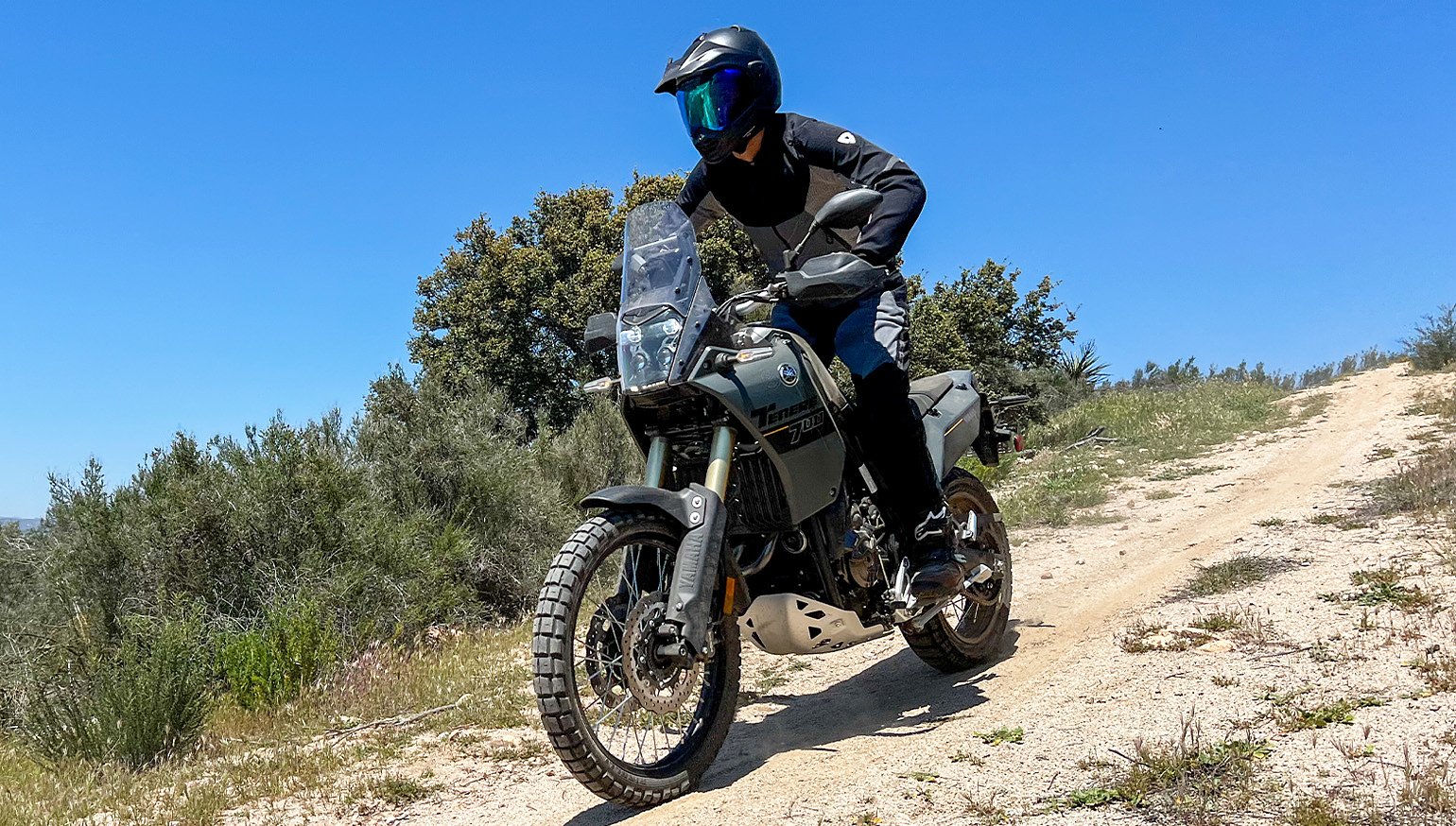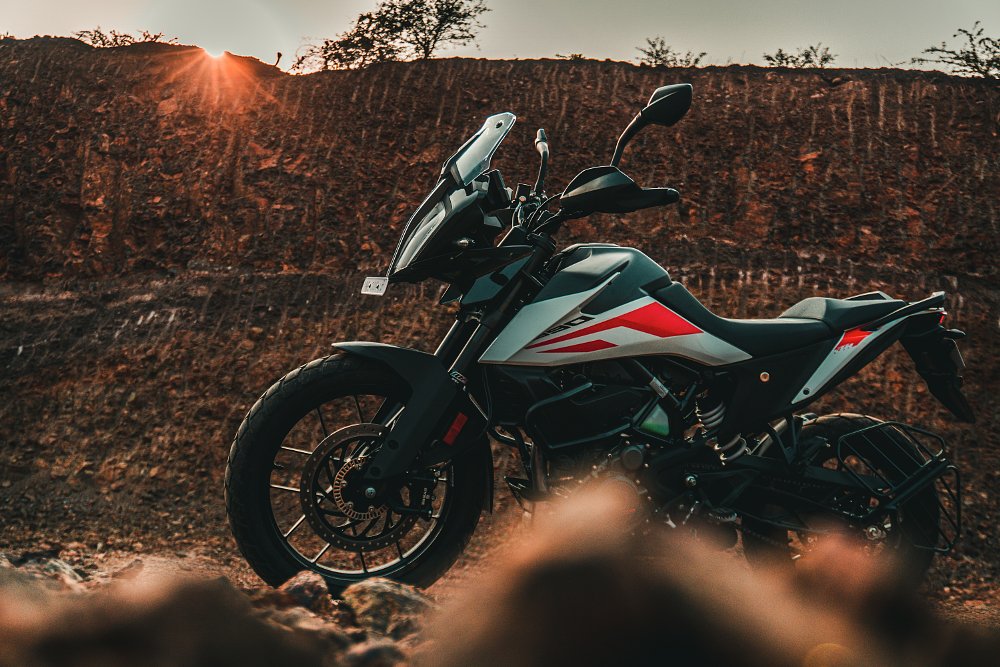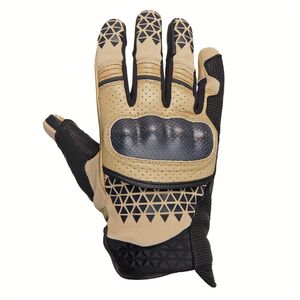I’m a natural at nothing. For me to be halfway decent at anything, I need practice. Lots of it. That’s the only reason I’m even slightly competent at riding street bikes, because practice is right outside my door. That isn’t the case with off-road riding.
Even worse than my beginner’s luck is my ability to self-teach. An autodidact, I am not. Left to my own devices, I’m bound to imitate what I saw or heard. It’s often second-hand and the results are lackluster, at best.
If practice makes perfect then practicing imperfect form only makes you perfectly bad. It’s like building a house of cards on a slab of Jello. In order to build any real off-road skills, I needed to lay a better foundation. In other words, I needed formal training.
That’s where Sedlak Offroad School (SOS) enters the chat.
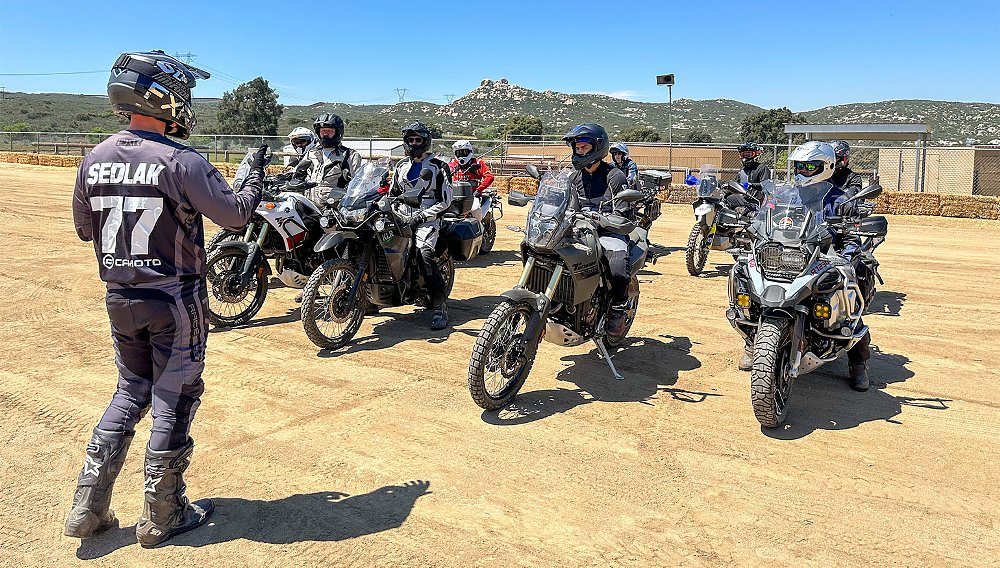
Background check
Daniel Sedlak started racing professionally at the age of 18. During his 15-year career, the German-born rider competed in the Motocross World Championship, European Supercross, and Enduro-X — aboard KTM, Kawasaki, GasGas, and Yamaha machinery, no less. After racing in 42 countries and six continents, Sedlak eventually put down roots in San Diego, founding his namesake school in 2013.
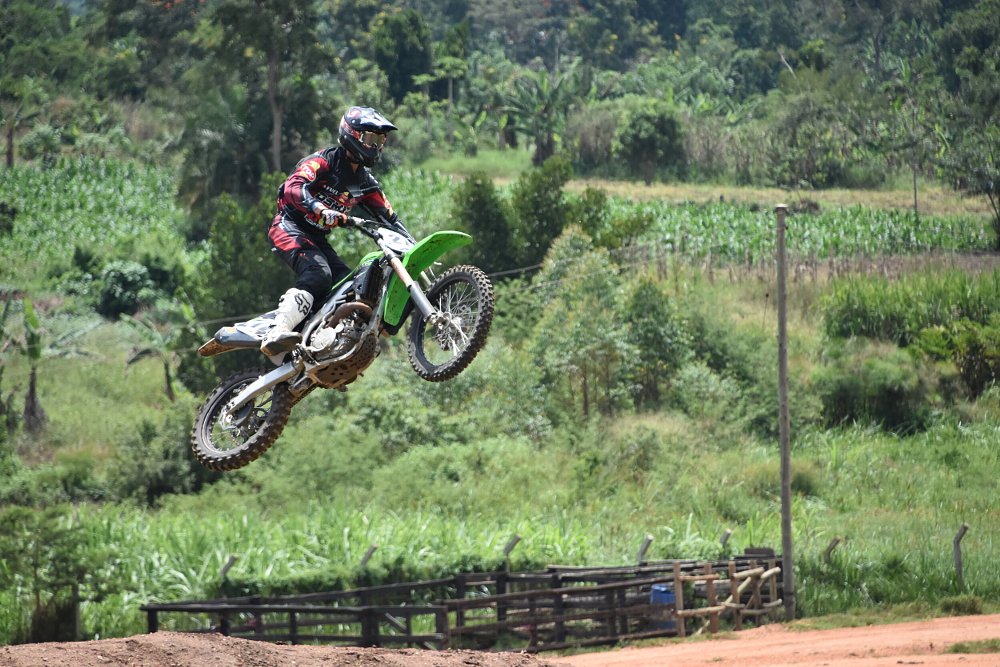
Over the years, SOS expanded its training courses to serve motocross, enduro, and adventure bike riders. It also built a strong roster of guest instructors. One of them, Edgar Cota, is a Baja 250, 400, and 1000 winner. With that type of pedigree at the helm, it’s no wonder SOS is in such demand.
My riding resume is far less impressive (it isn’t even in the right discipline, for crying out loud). I have just seven years of riding experience under my belt. The vast majority of it is on the road. I’ll just come out and say it: I like asphalt. Pavement. Blacktop. You know that stuff that rubber actually grips. Call it what you will, but it’s consistent. It’s reliable. I trust it.
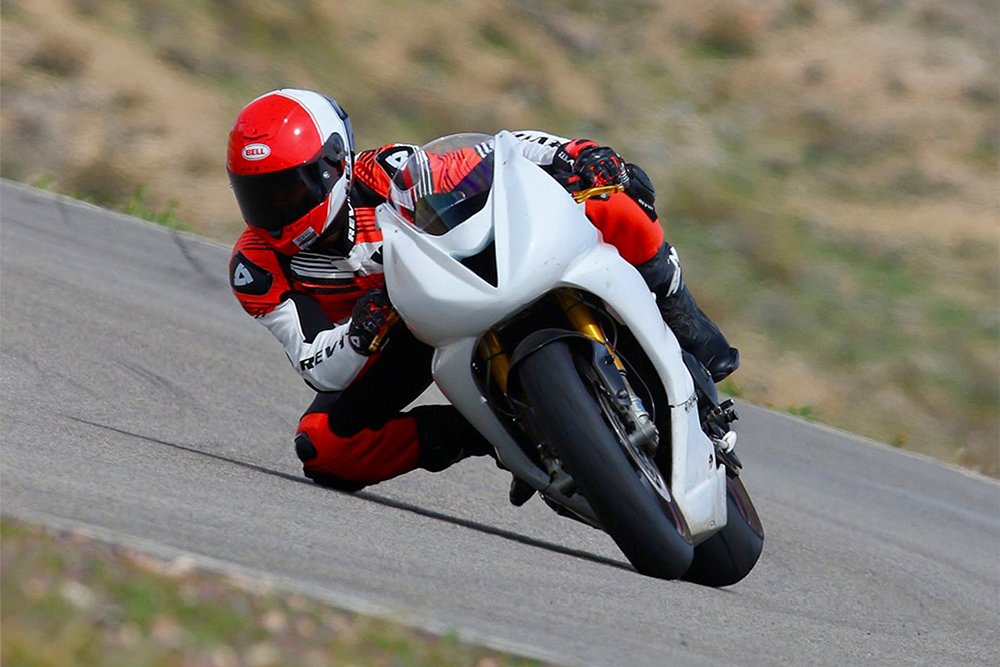
Dirt and I, on the other hand, we have a long-distance relationship. I visit from time to time. It’s great. It’s exciting. For a time, at least. Then I go back to reality and don’t return for months on end. It’s not just inconsistency that hinders my progress but also the road-riding habits I’ve formed over the years. That’s why immersing myself in all things ADV was in order, and Sedlak’s two-day ADV Weekend course was the perfect fit.
Starting out
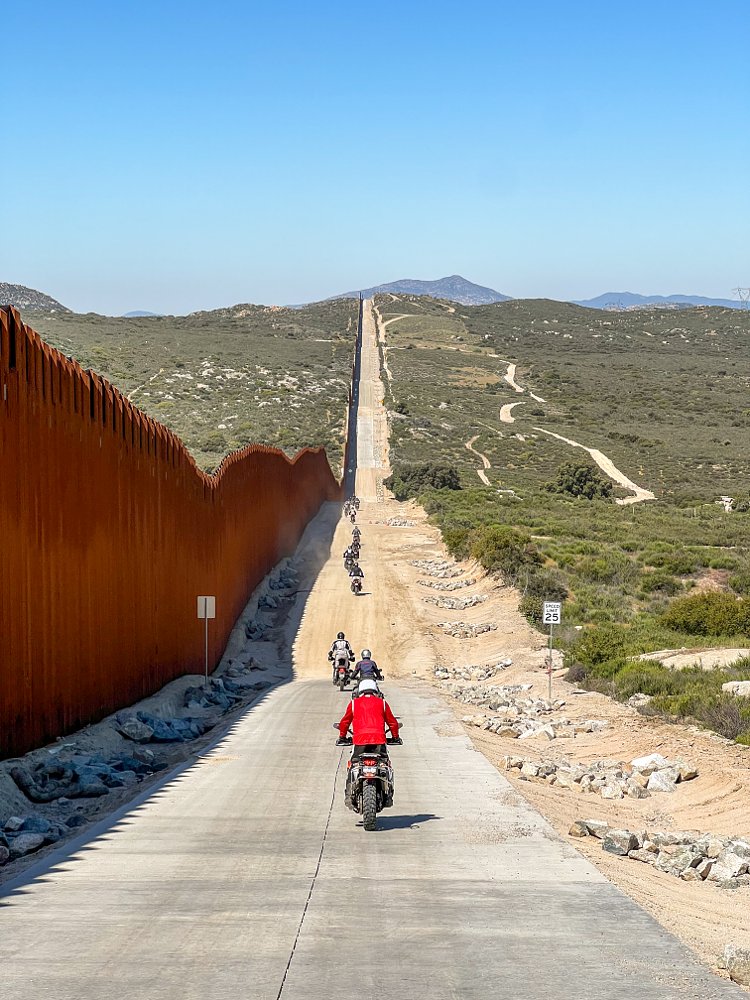
Location: Campo, California, about 60 miles outside of San Diego. Forecast: 77 degrees F and sunny, not a cloud in the sky. A breeze filtered through the oak trees. Neighing horses trotted around a nearby corral — all in the shadow of the Mexico-United States border wall. SOS’s Campo location is the picture of pastoral peace, if it weren’t for the grunty firing order of twin cylinders filling the air, that is.
Basecamp is centrally located to six picnic tables and his and hers restrooms. A nearby campground accommodates overnight camping, while a spigot and an old oak tree provide water and shade, two critical resources in this climate. Maybe just as important is access to a flat-track course, several hilly trails, and even a flatland loop (with whoops). Daniel and Edgar gather the group and lay out the timeline in broad strokes. Day one will start at 10 a.m. and finish at 4 p.m. The next day, it’s kickstands up at 9 a.m. and wrap up at 2 p.m. Each exercise lasts around 40 minutes with 15-to-20-minute breaks in between. It doesn’t get much simpler than that.
The class begins the way any good curriculum should, with baby steps. First lesson: body position. Edgar demonstrated the wrong form first. His knees bent, squeezing the tank. His arms straight, pulling back on the bars. His head down, staring at the ground. That’s my form, I thought. How embarrassing. Then he showed us how it’s really done. Toes on the pegs (pointing inward) and heels dropped, his weight pushing through the footpegs. Head over the handlebar, chest up, his arms ready to soak up hits or save a front-wheel tuck. It looked so simple from a profile view. Replicating it wasn’t as easy.
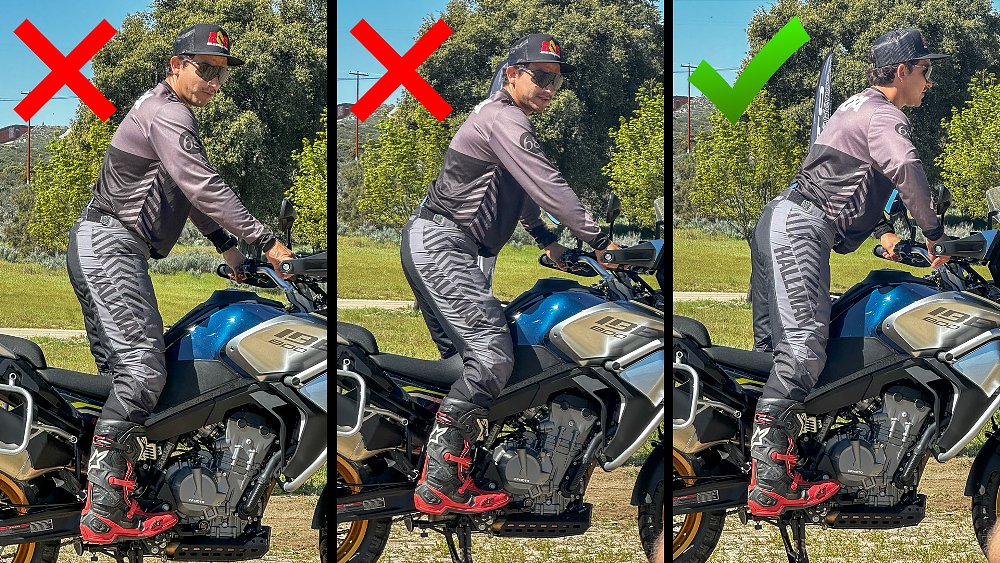
Out on the dirt oval, we practiced the standing position ourselves. Pushing on the inner peg around the cones, keeping our heads up through the turns, and fighting the urge to revert to old habits. I quickly realized I was steering with my hands, not my feet, a natural reaction for someone used to tipping in with a push on the inside bar. If bad habits die hard, then steering with the handlebar is the John McClane of mine. I’d have to fight that urge throughout the day. Oy vey.
After a short break, we applied our newly learned skills to even tighter, more technical turns. Frustration arrived right on cue. Maintaining such a foreign-feeling form while feathering the clutch and brushing the front brake seemed like a losing battle. I knocked over a few cones. I nearly locked up the front with a stab of the brake. I cursed in my helmet and longed for my dear old friend, the asphalt.
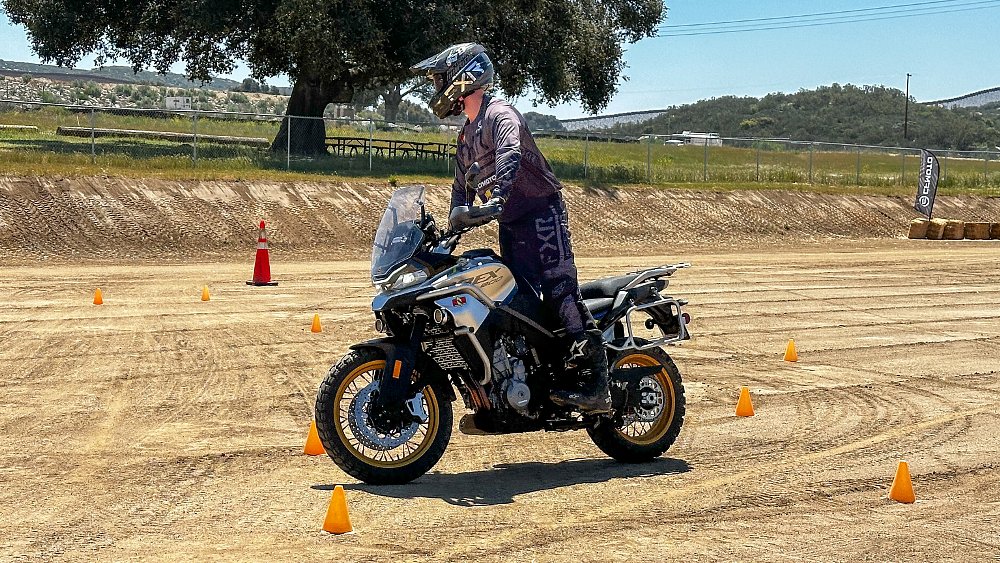
At that point, I remembered something I overheard Edgar tell a fellow student, “Trust the process.” As I struggled through the course, that platitude made him the most annoying person in the world. And then, somewhere between the cones, it all clicked. I stopped dropping my elbows. I started loosening my grip. I stopped clenching the tank. I started looking further ahead. Edgar was right. I think that made him even more annoying to me.
With newfound confidence in tow, it was time to leave the security of the flat track and put our skills to use on the trail. First up was a short half-mile loop with several climbs and descents. It was the perfect opportunity to practice downhill braking. It wasn’t long before I was sliding out of the downhill left and sliding into the uphill left. I was comfortable, and therefore, I was confident. Sometimes, that’s the first sign of trouble.
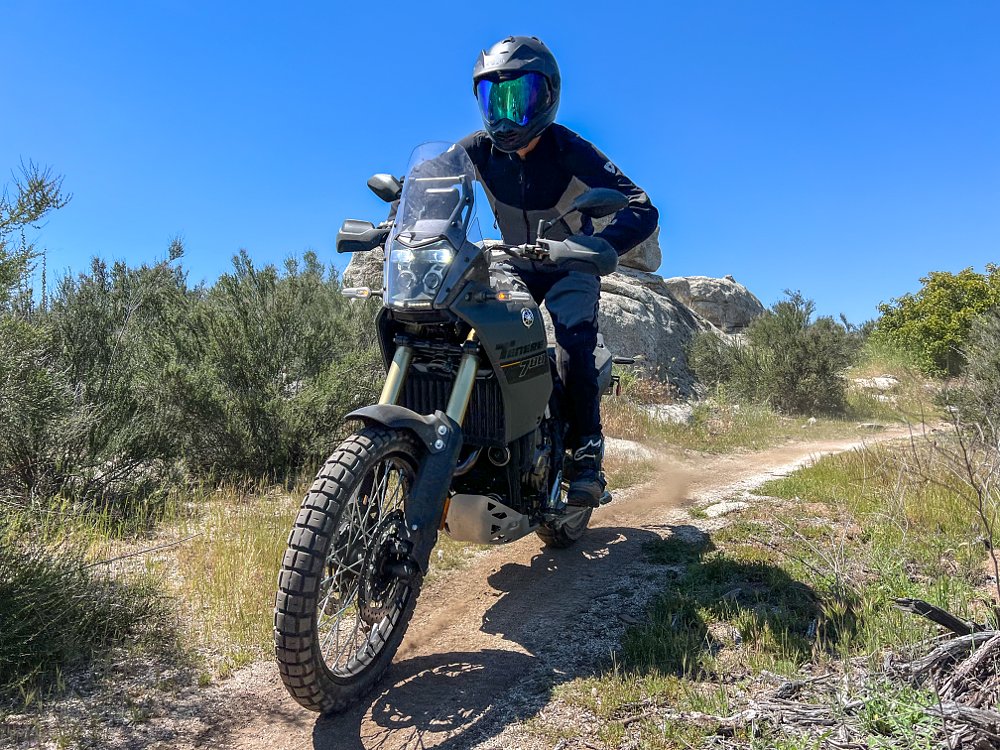
Somewhere between humility and hubris, between confident and cocky, that’s where I want to ride. That’s the point where I’m not too tense for subtle inputs but not so full of myself that I fall into sloppy maneuvers. I was treading into the latter. A snap of the rear wheel said as much. A front-end slide only cemented it. “Calm down,” I scolded myself. That sentiment was only confirmed by advice from Daniel and Edgar.
When asked what to do when old habits creep back into your form, Edgar simply responded, “Slow down.” When we rush, when we push the pace beyond our limits, the first thing to suffer is our technique. By focusing on form, we reinforce good habits, and as Edgar put it, the “speed will come to you.”
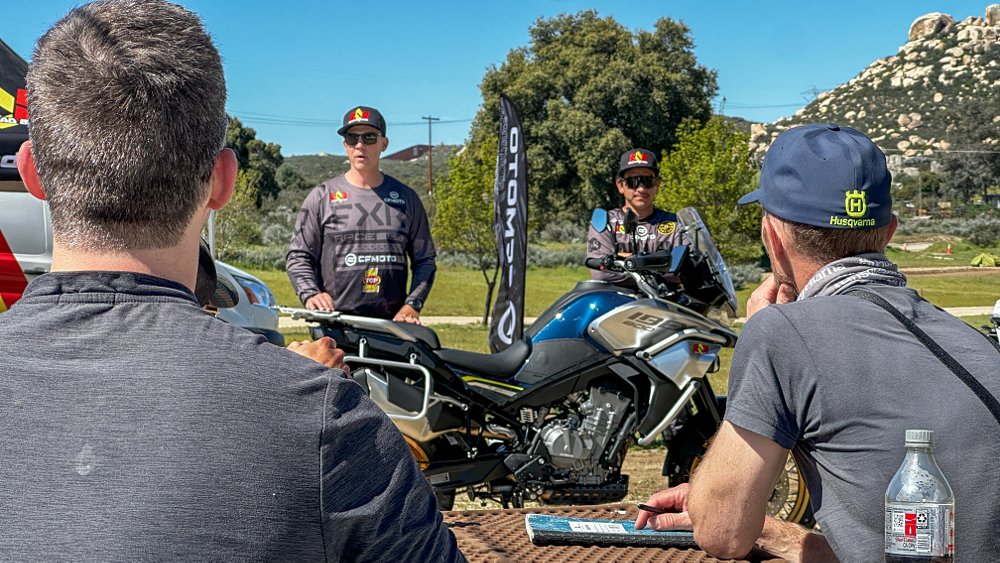
Daniel’s one-on-one feedback complemented Edgar’s thoughts, as well. This particular lesson concerned sliding the rear out of a turn. “Pfft,” I said to myself, “I’ve been doing that all day.” And that’s exactly when stage fright struck. Try after try, I couldn’t break the rear loose. That’s when Daniel pulled me aside and told me that I was bending my knees and pulling back on the handlebar. That rocked my weight onto the rear wheel, allowing the tire to gain traction. No cool points for me.
I heeded his advice the next go-around, leaning over the front as I gassed it. Lo and behold, the rear spun up, sliding ever so slightly to the outside. Nothing close to Toby Price in the Dakar. More a puff of dust, but a slide nonetheless. It wasn’t just the how, but the why that helped me solve that puzzle. Now, I can continue building on that foundation, all thanks to Daniel’s suggestion and explanation. It’s that one-on-one attention that makes such results possible. With just 12 riders split between two coaches, no one gets overlooked. There’s always something to work on and new to learn.
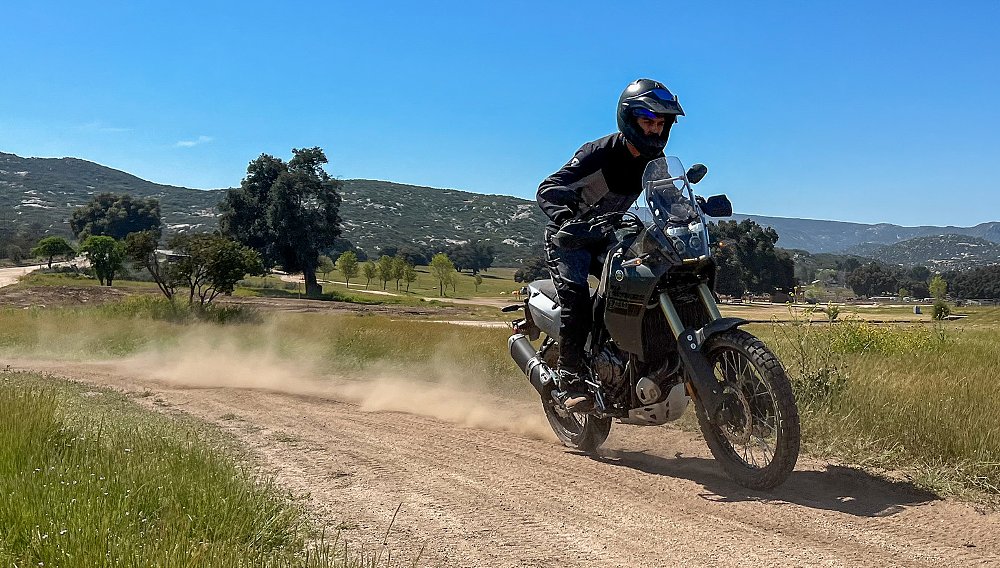
The first day ended with a gymkhana session. A wall climb, brake slides around corners, and the slow-speed maneuvers comprised the course. Although, the most challenging obstacle was the dreaded circle. With four cones placed at the corners (spaced six feet apart) and one in the center of that square, the rider needed to circle the middle cone using delicate clutch and brake modulations. Speed management wasn’t the only skill required. Weight management was too. Initiating the turn was one thing but counterweighting the outside peg thereafter was just as pivotal.
On two out of my three runs, I lost balance and dabbed my inner foot to save a tip over (multiple tip overs, if I’m honest). Needless to say, I was disappointed by my results, especially after all the progress I’d made throughout the day. It only gave me something to improve upon (plus, a little extra motivation) on day two.
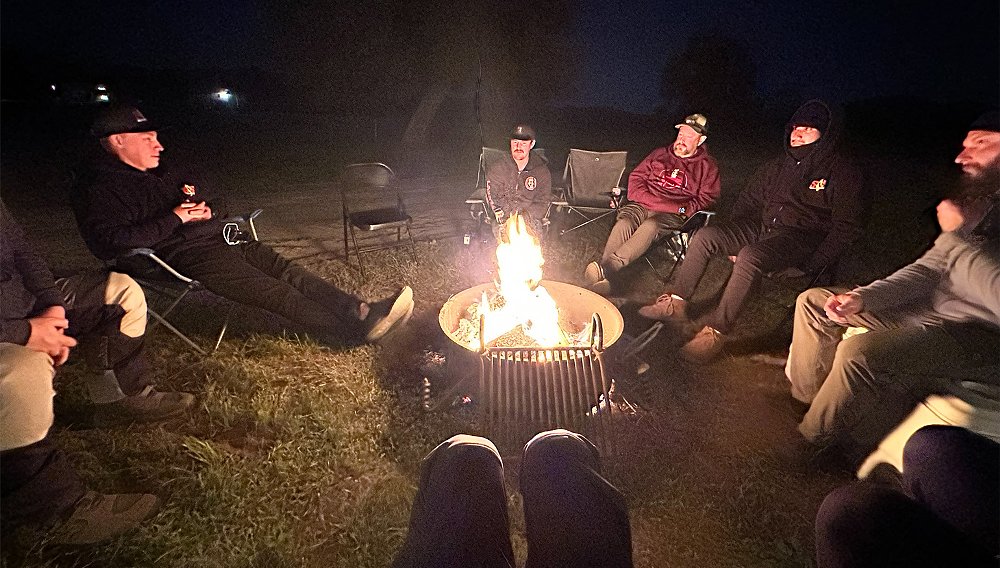
Bringing it all together
With our tanks full, our bellies fuller, and our kits covered in yesterday’s dirt, it was time to kick it up a notch. Daniel and Edgar wasted no time getting us out on the trail. What many of us took for a mild warm up lap quickly turned into a crash course, quite literally. Recent rainstorms washed out several sections of the surrounding trails, leaving ruts in their wake. Our route was no exception.
In those conditions, we soon learned the importance of line selection. Through heavily rutted areas, only one line granted safe passage. Diverting or panicking often led to dropping the bike. By observing the mistakes of others and heeding Daniel and Edgar’s directions, I was lucky enough to keep it on two wheels. Whether you dumped it or not, we all left all the wiser. I’d like to say the same for the next lesson, but I’m not all that sure.
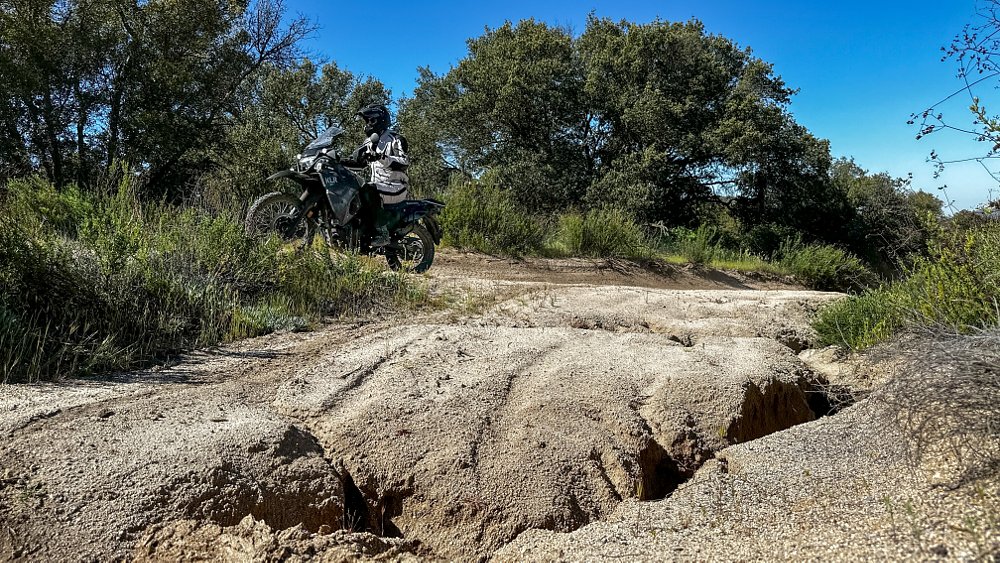
Following a water break, it was time for some hill climbs. Our objective: traverse a steep, rocky hillside. It looked formidable from its base but a combination of clutch slipping and throttle pinning made quick work of it. After a few passes, I was confident enough to catch some modest air off the top ledge (you could probably fit a deck of cards, if that, between my rear wheel and the ground).
As it goes, whatever goes up must come down and that’s where I ran into an old foe: sand. Some people look at sand and see a challenge. I look at sand and see all the ways I could fall. I can tuck the front here. I can spin up the rear there. I can do both in that deep patch. To me, sand’s about as welcoming as a barbed-wire fence. At Daniel’s instruction, though, it lost a bit of its bite.
With my feet driving through the pegs, the front didn’t fall away in an instant. Instead, I could feel the tuck coming and adjust accordingly. Also, Daniel encouraged us to carry some momentum through the sand, a sharp contrast to the head-down, foot-paddling technique that I often relied on. A little advice and a little practice went a long way, to say the least. By the time we finished the session, I was almost sad to stop. Almost.
I can’t sit here and tell you that the I completely conquered my fear of sand. It’s still my mortal enemy. I still look for it the way a desert vole looks for a rattlesnake. The difference is I no longer panic. Armed with new knowledge and skills, I’m better equipped to handle those scares with some semblance of poise. Comfort and confidence will come in time.
The penultimate lesson still focused on climbing, but not up short, steep hills. This time, long, winding inclines put my clutch and throttle control to the test, all while bending the bike around ever-tightening corners. At this point, the previous day and the heat (85 degrees F) finally started catching up to me. In turn, my form suffered. I started dropping my head and arms again, pulling on the handlebar all the while. Edgar even corrected my posture several times. However, not all lessons are learned from instructors. Fellow students can also teach you a thing or two.
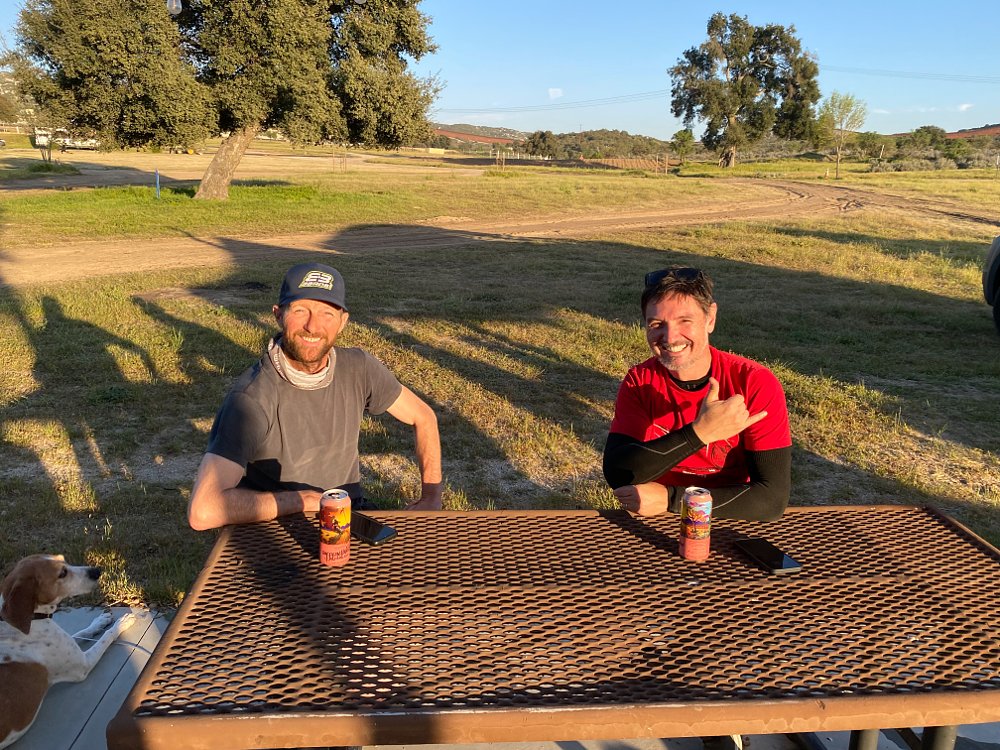
During a break, Derek from Nevada (there were two Dereks in our class), revealed that fatigue forced him to sit out a few laps. His underlying message: When you’re tired, you make mistakes. I was living out that situation in real time. Now, I didn’t sit on the sidelines, per se, but I used the downhill descent following the big climb as time to recuperate. I didn’t mind if others passed me as a result. It was more about preserving form. From there, the speed would come to me.
Just as the first day ended, the second day wasn’t complete without a gymkhana session. This time, with even more sliding and even more slow maneuvers than before. Still, the dreaded circle was the only obstacle on my mind. I ride the wall, slide around two cones. weave through some others, and then the moment of truth arrives. The circle.
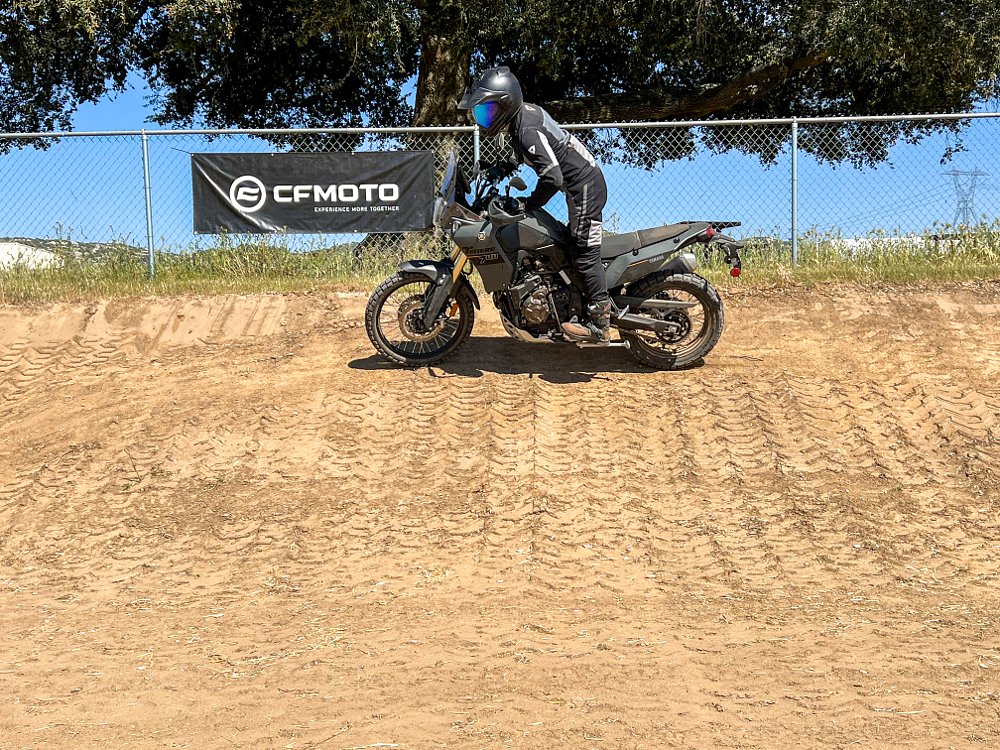
I tip in and to my surprise, it all clicks once again. I counterweight the outside peg, I brush the brakes, and complete two passes around the center cone, smoother than ever. I repeat that performance two more times, finally putting the previous day’s failures to rest. It’s that sense of progression and accomplishment that makes Sedlak Offroad School so gratifying. But, the end is just the beginning of the adventure.
Perfect practice makes perfect
Prior to attending the Sedlak Offroad School, the only adventure riding skill I ever developed was picking up the bike (after falling off of it, of course). The prospect of dropping a nearly 500-pound machine always clouded my judgment, questioned my every move. Now, instead of obsessing over not dumping the bike, I focus on weighting the pegs, on bending my elbows, on looking ahead. To become a good rider, you have to know the fundamentals first. After that, it’s just a matter of maintaining and building upon them.
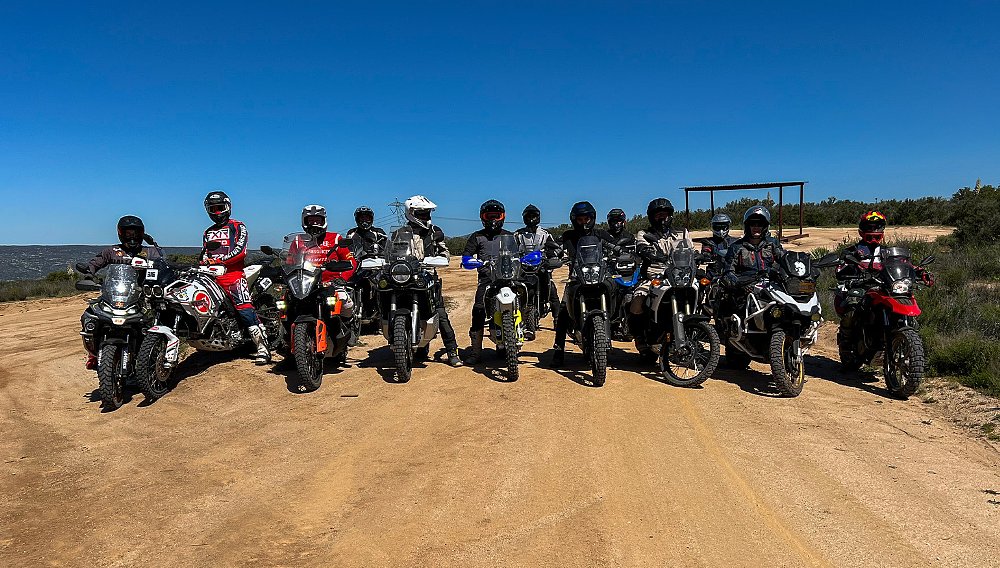
Attaining knowledge is one thing but putting it into practice is another. Now that I’ve gained these skills, I can’t squander them. That’s why I already have other adventure bike courses booked for later this year. I also intend to return to SOS for a refresher at a later date. For those interested in attending Sedlak Offroad School’s ADV Weekend class, the $795 package includes dinner on Day One, breakfast on Day Two, and free on-site camping. Participants should anticipate bringing their own bike and camping gear, though. More information on all SOS courses is available at the company's website. Those who can’t travel to California, fret not. Sedlak recently released his full ADV curriculum online at The ADV Academy. That’s a great resource to learn new skills and, if you haven’t already guessed it, practice.

 Membership
Membership

